By Koldo San Sebastián
This article originally appeared in Spanish on EuskoNews. Translated, with the aid of Google Translate, with permission of the author.
Jordan Valley, Oregon includes the village of the same name and the nearby territory in which it is located. It is halfway between Boise, Idaho, and Winnemucca, Nevada. As Joseph H. Geiser recalls, in the early 1940s, the Basques “constituted the strongest community in the entire area” [1]. Jordan Valley, which became a city in 1911, has therefore been considered as “a Basque settlement” (Geiser, 1944: 13). This author also highlights that the Basques of Jordan Valley managed to maintain a strong cultural and ethnic identity due to many years of geographic isolation, the exclusive use of the Basque language by the first generation, the self-sufficiency of the group, and the cohesion of the community that excluded “Americans” except for business and commerce. The strong family structure and its collective pride reinforced the use of Basque, even among members of the second generation educated in American schools. Many first-generation Basques never learned English.
Social life was spontaneous because they lived close to each other. Even the Basques who lived in canyons or streams always had two or three Basque families nearby with whom they interacted. There were many ways to gather: playing cards, dancing, and music. In addition, boarding houses became meeting places, not only for guests but also for the Basques in the surrounding area.
Between the 1910s and the early 1940s, Jordan Valley was primarily a Basque enclave, with 250 to 300 Basques living in the area, comprising more than two-thirds of the population (The Sunday Oregonian, 1937- 06-20). Christian R.N. Beers points out that in the 1920s most of the businesses in the city were owned by Basques. Second-generation Basques were involved in the service economy: shops, hotels and pensions, pool halls, blacksmith shops, or family ranches. In the 1940s, 90 percent of Jordan Valley sheep farmers were Basque, and they also owned half of the cattle ranches in the area. In the 1940s, the six-member city council consisted of four Basques and two non-Basques. During the same time, the mayor and the city treasurer were Basques.
Between 1940 and 1943, 60% of the men recruited in Jordan Valley were first and second generation Basques: they served in the infantry, artillery, marines, navy, or counterintelligence. There were some wounded who were repatriated and one casualty. On October 9, 1944, James Corta Ocamica died on the Italian front due to wounds from a German machine gun. Four other Corta brothers fought in World War II.
The vast majority of first generation Jordan Valley Basques come from the Lea River Valley: Lekeitio (28), Ispaster (18), Gizaburuaga (5), Mendexa (5), Amoroto (3), or Aulestia (3). They are followed by Errigoiti (10), Ibarrangelua (9), Berriatua (6), or Ereño (5) (US Federal Census). Many of them are buried in the local cemetery and, with them, their children and grandchildren.
The first Basques to arrive in the area were Antón Azcuenaga and José Navarro, after an odyssey that almost cost them their lives. This is how Sol Silen tells the story:
“…He and his partner José Navarro decided to go from McDermitt to Jordan Valley. That trip demonstrated all the energy and perseverance that form the basis of Mr. Azcuenaga’s character. As the roads were very lonely, they deviated from the highway and were lost for five days in the desert. At the end of that time, after having manifested an integrity worthy of discoverers, when they were already considered lost, they arrived at an inn of the diligence, and fainting with hunger, they remained there until they regained their strength” (Silen: 49).
Geiser includes in his thesis the names of the pioneers that Agustín Azcuenaga had given him: Agustín and Antonio Azcuenaga, José Navarro, Pedro Arritola, Luis Iturraspe, Cipriano and John B. Anacabe, and Juan Urlézaga (Urlizaga). Only Urlezaga is not from the Lea Valley, although he actually lives in nearby Jordan Creek. And he married Gloria Bermeosolo Acarregui, from Lekeitio. After them came friends, neighbors and relatives who settled in Jordan Valley (Geiser:24). In 1900, only ten Basques appear in the Jordan Valley census: Anton Azcuenaga, John Anacabe, José Calzacorta, José Navarro and his wife Pia, Luis Yturraspe and his wife Catalina, Dionisio Egurrola, Marcos Renteria, Luis Bermeosolo, John Anacabe and José Calzacorta. All but three – Navarro (Ibarrangelu), Calzacorta (Berriatua), and Rentería (Elantxobe) – come from Lekeitio and nearby villages. That same year, in neighboring Pleasent Valley, twenty Basques lived spread out on the ranches of Sam Anacabe and Agustín Azcuenaga. All but one, Domingo Lequerica, also came from Lekeitio (US Federal Census, 1900). Ten years later, the number of Basques had multiplied by twenty.
From Arropain to Oregon: How the Jordan Valley Community Was Formed
At the end of the long straight line of the Lekeitio-Durango highway, in the section that goes from the humilladero – the shrine – to the hermitage of Santa María Magdalena de Azurtua, is the Arropain neighborhood, part of Ispaster, of the Krutziaga neighborhood, and part of Lekeitio. Here was the primitive port of Lekeitio and, until the beginning of the 20th century, two riverside shipyards, where carpenters from the neighboring villages (Ispaster, Amoroto, Mendexa, Gizaburuaga) worked. There are also some scattered hamlets such as Venta (Benta-zaharra), Sosuena, Zubieta, Amillaga, Madalena… or houses that had been appearing after the construction of the new road, such as Troixa, Gasparrenekua… Some belong to Ispaster; others, to Lekeitio. Here lived families like the Acarregui, the Achaval, the Odiaga, the Uberuaga, the Azcuenaga, the Eiguren…
Eva Hunt Dockery refers to Azcuenaga as “the first Basque who came to this state (Idaho).” Different authors have followed Sol Silen’s account of the trip that José Navarro and Antón Azcuenaga made from Northern Nevada to Jordan Valley, Oregon. Navarro was born in the Akorda neighborhood, in Ibarrangelua, and Azcuenaga had come into the world in the anteiglesia of Abando (now Bilbao). It was not clear if they knew each other before or if, after meeting in Nevada, they decided to embark on an adventure north together.
Today we know more. The genealogist Lisa Corcostegui discovered that Antón Azcuenaga, although born in Abando-Bilbao, had grown up with his brothers in the Arropain neighborhood, in the house of a great-aunt. Furthermore, we know that Azcuenaga was in Lekeitio in 1887 working as a basket maker. We also know that, in November 1886, Jacoba Navarro, José’s sister, had married José Eiguren, moving to live in the Zubieta farmhouse, in Arropain. This hamlet is one hundred and fifty meters from Azcuenaga’s house.
But let’s return to Silen. In his work it is said that Azcuenaga arrived in New York on April 3, 1887. From there he traveled by train to Winnemucca after suffering some mishaps (S. Silen: 49). That year he was still listed as a parishioner of the parish of Our Lady of the Assumption of Lekeitio (Libro de Registro). With regard to José Navarro, in Hawley’s History of Idaho – Silen does not give the date – it is said that he arrived in 1887 and that he spent two years in Nevada before beginning the journey to Jordan Valley (a period similar to that of Azcuenaga ). In the testimony of a “nephew” of Navarro (probably Pasko Eiguren) to Hellen Corta collected by Sarah Baker Munro, it is stated that the two Basques had arrived in Winnemucca together from New York via Salt Lake City, which makes one think that they did the whole journey together [2]. It remains to be known where Navarro lived before emigrating.
The truth is that, following Antón Azcuenaga, a significant number of friends, relatives and neighbors arrived in the United States whom he sponsored so that they could pay for the trip and settle in the New World (Idaho Statesman, 1910-02-06). These included, among others, his younger brother Agustin, Luis Yturraspe, Pedro Arritola (from Ispaster), and Cipriano “Sam” Anacabe (Oregonian, 1968-07-28). These, in turn, brought relatives and neighbors in a chain that we are now trying to reconstruct.
Antonio Azcuenaga, while born in Abando (now Bilbao) on June 17, 1868, grew up in Arropain, in the part belonging to Lekeitio. He, his younger brother, and his older sister were orphaned when they were very young. Anton was not yet seven years old. They then went to live with some relatives, the Uberuaga (originally from Gizaburuaga) in the Troixa house, in Arropain, Lekeitio. Old man Uberuaga’s wife was the great-aunt of the orphans. Antonio attended the local school for a time until, when he was of age, he began to work as a basket weaver, the trade of his relatives. He worked for a while until, while continuing to attend to the family finances; he saved a hundred dollars to go to America. His employers in the basketry lent him the money that was missing. Neither in Silen’s work, nor in the biography published in the third volume of the History of Idaho [3], are there references to how and why he decided to emigrate to the American West.
He left Bilbao for Bristol and, from there, he headed for Liverpool, where he embarked along with another young Basque. He was then nineteen years old. He landed in New York on April 3, 1887. After a rough train ride, he reached Winnemucca, taking a job as a sheepherder. From there, he went to McDermitt where he teamed up with another Basque, José Navarro, from Akorda-Ibarrangelua, and they both decided to go to Jordan Valley, Oregon. On their trip, they were lost for five days and barely managed to reach a stagecoach post.
In April 1889, he was tending sheep in the Owyhee Mountains. That same year, he returned to Jordan Valley. For quite some time, Azcuenaga was the only Basque there.
In Jordan Valley, while working as a shepherd, he bought a blacksmith shop. He was in business for six years and, with the proceeds selling his shop, he opened a supply store (Jordan Valley Mercantile Company) which he sold in 1902 to Fred J. Palmer (Idaho Statesman, 1902-07-25) and, after some time, he gathered a flock of sheep that was the origin of his fortune.
In 1900, when he moved to Boise, he opened, with two other partners, the Oregon Hotel at the corner of Ninth and Front Streets. The hotel was across from the Oregon Short Line Railroad station. A few years later he rented it to Mateo Arregui.
In 1909, he headed the Jordan Valley Livestock & Land Co which also included his brother Agustin and Elmer Clark. The company had a capital stock of $50,000 (Idaho Statesman, 1909-07-29). Later, the company was renamed the Azcuenaga Valley Livestock & Land Co. That year, together with his brother Agustin and José Navarro, he was the owner of the company that owned the Hotel Iberia in Boise (Idaho Statesman, 1909-12-10).
Agustín, “Gus” as he was known, was the youngest of the Azcuenaga brothers, born on August 27, 1872, and immigrating to the United States in April 1890. He headed for Jordan Valley, where his brother Antón lived. He came to be regarded as the foremost rancher among the Owyhee Basques. He had his cabin on Trout Creek. In 1903, he owned a herd of 5,000 sheep (Owyhee Avalanche, August, 7, 1903). He was married in the Boise Cathedral on March 26, 1896, to María Agustina Urquiza, of Lekeitio, becoming the first Basque marriage in Owyhee (Owyhee County marriages 1890-1904, Owyhee, ID).
In 1900, the Azcuenaga (Agustín) family was made up of the married couple, their two eldest children, and their fifteen-year-old niece, María Uberuaga, who had resided in the United States since 1899. She resided in Pleasent Valley. From there she moved to Jordan Valley (Oregon).
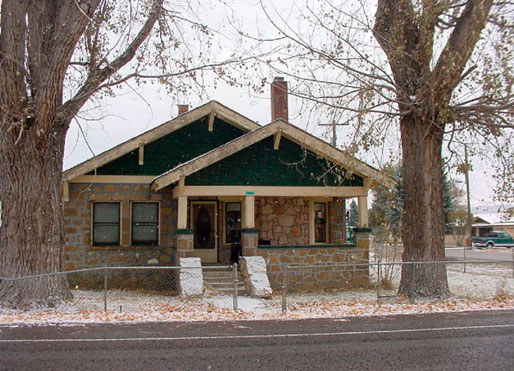
Agustín lived in Boise for a while until he built the Jordan Valley Hotel and a general store, settling permanently in this small Oregon village (Etulain, 1991: 2). The financial crash of 1929 affected him very negatively. He lost the ranch and the sheep that he valued at $100,000 (J.H. Geiser: 85). He was the father of five children: Antonio (4-Feb-1897), Luis (16-Apr-1899), John (4-Apr-1901), Alice (14-Aug-1907), and Ethel (6-Aug-1910). ). He passed away in Idaho Falls on February 2, 1942. He is buried in Jordan Valley.
The century had not yet ended when Antón and Agustín Azcuenaga’s niece and nephew, Maria and Lorenzo Uberuaga, arrived. The first had been Maria, daughter of Florentina and her first husband. She was born in Arropain on October 6, 1883. She arrived in 1899. She was married in Silver City, ID, to Pedro Arritola on December 20, 1905. By 1910, she was in Boise. In 1920/1930, they resided in Jordan Valley, Oregon. She was the mother of Eduardo, Lorenzo, Pascual, Paul, Manuel, Joe, and John. She passed away in Nampa on June 10, 1934.
Lorenzo, born in Lekeitio on September 5, 1888, arrived in New York aboard La Lorraine from Le Havre on August 20, 1900. In 1917/1920, he owned a farm in Brunzell, Owyhee, ID, in partnership with his brother Pedro. His parents also lived on the farm: Agustín and Florentina. Luis Murelaga worked for them. On October 9, 1942, he married Edna Koch. He retired in 1945, settling in Nampa. In 1936, he was a farmer and rancher in Reynolds, Owyhee Co. That year he filed for his naturalization. He passed away in Nampa, Idaho, in March of 1969.
María and Lorenzo were followed by Valentina, born in Lekeitio on February 15, 1891. Before emigrating she was a seamstress. She arrived in New York aboard La Lorraine from Le Havre on August 24, 1907. She headed for Jordan Valley. She gave her uncle Anton Azcuenaga as a reference. She married Elias Gabica. She was the mother of Charlotte, Ricardo Pedro, Louise, and Alice. She for many years she lived in Nampa, Idaho. She passed away in Ontario, Malheur Co, Oregon, in September 1973.
Agustin Uberuaga was born in the house called Troixa, in Arropain, Lekeitio, on September 2, 1859. Before emigrating he was a basket maker, as were his father and the Azcuenaga brothers. He married Florentina Azcuenaga in Lekeitio on December 10, 1887, with whom he had three children. Florentina had had a daughter from her marriage to José Ignacio, Agustín’s brother who had died. He first arrived in 1896. In 1900, he was working as a sheepherder for his brother-in-law Agustin in Pleasent Valley. In 1908, Agustín Uberuaga, his wife Florentina Azcuenaga, and his youngest son, Pedro, arrived and met with Lorenzo. In this way, the three Azcuenaga brothers were reunited forever in the American West. In 1920, he lived with his wife and their children Lorenzo and Pedro in Reynolds, Owyhee, ID. He passed away on December 27, 1924. Florentina Azcuenaga was the eldest of the Ascuenaga Basterrica siblings. She was also born in Abando. She was married twice: the first with José Ignacio Uberuaga with whom she had a daughter. The second with her brother-in-law Agustín from her with her had three more children. In 1908, she moved to Oregon. (Voices from Basque America: Richard Gabica, CBS-UNR).
Pedro Uberuaga, born in Lekeitio on June 29, 1894, arrived with his parents in 1908. In 1914, he is listed as the buyer of a 160-acre parcel in Bruzell (Idaho Statesman, 1914-12-04). On November 2, 1917, he was drafted into the US Army. At that time, he had already made a declaration of intent to become a naturalized American. In 1920, he was a partner with his brother on the Brunzell farm. He passed away in Nampa on January 10, 1939.
The first of Antón Azcuenaga’s friends to arrive was Cipriano “Sam” Anacabe, born in Lekeitio, on September 16, 1862. He immigrated in 1889, heading for Jordan Valley (Oregonian, 1968-07-28). In June 1894, he had a letter at the Boise post office (Idaho Daily Statesman, 1894-06-30). In 1896, his wife Bibiana Arguinchona, whom he had married in Natxitua, and his son John B. joined him. In 1900, he was listed as a rancher in Pleasent Valley (Owyhee). That year, Domingo Ocamica and John Acarregui worked for him. On July 22, 1905 he was killed by John “Arenzadel” (Aranzabal) in Jordan Valley. The latter committed suicide in jail after leaving a letter in which he confessed to his crime (Idaho Daily Statesman, 1905-09-19). After the death of her husband, Bibiana returned to Bizkaia with the three small children born in Jordan Valley. The woman died three years after her return. Later, Joseph settled in Boise. John B. (Juan Bautista) was born in Lekeitio (Bizkaia) on August 29, 1888. In 1910, he was a sheepherder in Jordan Valley, Malheur Co. In 1917, he resided in Boise. He worked for many years at the Golden Rule Store. In 1930, he moved to Reno where he franchised the bus service between Reno and Sparks. Later, in addition to the bus line, he became a taxi driver. He died after being run over by a young man on June 11, 1948 (Nevada State Journal, 1948-06-12).
Pedro Arrítola, born in Ispaster, on June 12, 1867, arrived in the United States in 1893. He worked as a sheepherder in Nevada and Oregon. He became a rancher and, by 1917, owned a ranch in Dry Creek, ten miles from Boise. He was also listed as a shareholder of the Iberia Hotel along with Antonio and Agustín Azcuenaga and José Navarro. In 1930, he was a rancher in Jordan Valley, Malheur Co, Or. On December 20, 1905, he married María Uberuaga, niece of Antón Azcuenaga, in Silver City. He had seven sons (Silen: 195). He passed away in Oregon in 1933.
After Pedro, in 1894, came his brother Juan Manuel, born on April 19, 1862. Before emigrating he was a baker. In 1906, he traveled to Ispaster in search of his son Dionisio. His other son, Rufino, had arrived three years earlier. He was the owner of several herds and, with his sons, he formed a company. He passed away in Jordan Valley in 1921.
Rufino “Rufus,” born on November 16, 1887, had arrived in New York aboard the Yvernia from Liverpool in March 1903. He settled in Jordan Valley, Malheur Co, Oregon, where his uncle and his father lived. He worked as a sheepherder and, for a time, was employed by the Jordan Valley Mercantile Co (in both cases for the Azcuenaga brothers), until he decided to become independent by dedicating himself to raising sheep. He owned the Garden Ranch known as Arriola Ranch. The brothers also headed a sheep company, Arritola Sons and Co, which for a time were partners with José Goicoechea (Idaho Daily Statesman, 1925-11-23). In the 1930s/1940s, he ran a pool hall in Jordan Valley. On October 9, 1911, he married Maria Elordi in Nampa, Idaho. He was the father of Luis (July 26, 1912), Benjamin, and Virginia.
Dionisio, born on October 5, 1891, was 14 years old when his father, Juan, went to Ispaster to look for him and take take him to the United States. In 1917, he was an independent rancher and farmer in Malheur County, Oregon. That year, after passing the medical examination, he was declared fit for military service. He worked as a sheepherder for the Bruneau Sheep Co. and for J.D. Aldecoa. In 1930, he was residing in Grasmere. He passed away in Idaho on January 20, 1964.
The youngest of the Arritola brothers, Fermín, was born on September 25, 1897. He arrived in New York aboard the Californie from Bilbao on May 1, 1915. He gave his father’s, living in Jordan Valley, as a reference. In 1918, he tended the sheep of his countryman Justo Corta. He moved to Boise where he worked for a few years as a guard. He became a naturalized citizen in 1967. He Died in Boise at age 97 on November 24, 1994.
Antón Azcuenaga’s group of friends is closed by Louis Yturraspe Uberuaga, born in Lekeitio on January 22, 1870. He arrived in the United States on March 22, 1893. In December 1893, in partnership with his cousin Jose Uberuaga, he purchased the City Restaurant and Lodging House from R. J. Luark. The Basques planned to take it over on January 1, 1894 (Idaho Daily Statesman, 1893-12-24). He also rented rooms. In 1917/1930, he owned two ranches in Jordan Valley and Jordan Creek (Luis Ranches). In addition, he built himself a stone house in Jordan Valley known as the “White House.” He married Natalia Acarregui Bilbao (b. Arropain-Ispaster) in Jordan Valley. He was the father of Jesús (19-Oct-1900), José (15-Oct-1901), María (2-Jul-1906), and Luisa (1919). He passed away in Jordan Valley on January 3, 1933.
Yturraspe, in the company of another “American” shepherd, Melitón Bengoechea (b. Bedarona), bought a piece of land in Arropain from Antonio Mendieta Maguregui on which, in 1907, they built a two-family house.
The Acarregui brothers, brothers-in-law to the Yturraspes and neighbors in Arropain of the Odiagas, the Uberuagas, and the Azcuenagas, were from the Venta or Benta-Zaharra farmhouse, now defunct, belonging to the church of Ispaster. The first to arrive, in 1896, was Domingo, born October 21, 1867. In 1900, he was working as a sheepherder for Agustin Azcuenaga in Pleasent Valley, OR (US Federal Census, 1900).
The last of the Acarregui brothers was Juan Policarpo, John P, born January 26, 1878. He arrived in New York aboard La Normandie from Le Havre on February 28, 1899. He headed for Boise, settling in Jordan Valley. He worked for four years as a sheepherder and cowboy for the Azcuenaga brothers until he gathered his own flock of sheep. In 1917, he had 5,000 sheep that grazed between the states of Idaho and Oregon. In 1930/1942, he owned a ranch in Jordan Valley. He married Paula Anchustegui (de Berriatua) in Boise on July 3, 1907 (Idaho Statesman, 1907-07-03). He is the father of Ángel (Boise, 31-May-1908), Antonio (Jordan Valley, 14-Jul-1910), Floyd (7-Mar-1911), Juanita (1918-1924), and Víctor (1919-1969). In 1917 he was residing in Boise. He died in Oregon on March 30, 1943 (Silen: 194).
The Aldecoas, who lived in a nearby hamlet in Krutziaga, were relatives of the Acarregui. The first to arrive was Domingo Aldecoa, born around 1884. He arrived in New York aboard the Rijndam from Boulogne on April 21, 1903. He headed to Oregon where his uncle Juan Acarregui lived. On April 3, 1910, he was murdered in cold blood by an individual named Charles Wear. At the time, Adecoa was a rancher and partner in one-third of a large herd in Jordan Valley.
He was followed by his father, Luis Aldecoa. He was born in Ugao-Miravalles on September 9, 1860. He went to Lekeitio where he worked on a fishing boat. On May 17, 1884, he married María Roca Egaña Bilbao in Lekeitio, settling in the Krutziaga de Ispaster neighborhood. He arrived in New York aboard the Rotterdam from Boulogne on November 4, 1903. He went to Boise where he stayed for five years. He made a second trip in 1909 after visiting his wife in Lekeitio.
The third to arrive was León, born on September 12, 1889. Before emigrating, he was a fisherman like his father. He arrived in the country aboard the Saint Paul on March 21, 1906. He settled in Boise where his mother lived. In 1917, he was an independent rancher in Jordan Creek, near Jordan Valley. He was married in Boise on October 15, 1917, to Angela Siluaga. He passed away on September 18, 1935.
On March 21, 1908, two other members of the Aldecoa family arrived in New York aboard the Saint Louis from Cherbourg: Ángel and Josefa. Angel was born on March 1, 1892. He grew up in Lekeitio. He went to Boise where his father, Luis, lived. He worked as a sheepherder for his uncle Juan Acarregi. On July 8, 1916, he married Eve Victoria in Jordan Valley. In 1917, he was an independent rancher in Jordan Valley, Malheur Co, Oregon. In 1927 the family moved to Reynolds Creek. In 1942, he was an independent (dairy) farmer in Five Mile, Ada Co, Id. By 1959, he was living in retirement in Boise where he owned an apartment building. He sold the building, settling in Jordan Valley. He passed away in Jordan Valley in September 1972. His sister Josefa, born in 1887, also went to Jordan Valley to join her father.
The last one was Basilio “Juan” born on March 22, 1898. He arrived in New York aboard La Savoie from Le Havre on April 8, 1911. In 1918, he worked for Simón Acordagoitia in Jordan Valley. He was partner of John Archabal. In 1930, he was working with his brother-in-law Lázaro Urquiaga in Rome, Oregon. In 1939/1948, he was a farmer in Boise. He married Juana. He passed away in Boise on December 20, 1968. He is buried in Jordan Valley.
The Eiguren of Zubieta
In Arropain, there was also the Zubieta farmhouse, situated within the limits of the park of the palace of the same name belonging to the Adan de Yarza family. The couple formed by José Eiguren, from Mendexa, and Jacoba Navarro, from Akorda-Ibarrangelua, lived here. Jacoba was the sister of José Navarro, the adventure and business partner of Antón Azcuenaga. In 1899, Navarro had returned to Lekeitio to marry a young woman from Mendexa, Pia Azpiri. Later, he sponsored the trip of his nephews, his sister’s children.
The first of the nephews to arrive – in 1902 – was Pascual, “Pasko,” born on May 17, 1889. In 1910, he was already a partner of his uncle. In 1917, he was a farmer and rancher in Jordan Valley, Malheur Co, Oregon. He had an 800 acre ranch and a share in the famous Sheep Ranch. That year, he argued against recruiting him to care for his wife and his two children. On June 14, 1913, he had married Catalina Elordi. He was the father of Federico (Fred). In 1942, he had a ranch near Arock, Malheur Co,. Oregon.
Pasko Eiguren transformed the ranch from sheep to cattle. His son Fred completed the process. Elias, Pasko’s grandson, is a well-known rancher who takes his children to learn Basque and, once a week, Basque dances.
On April 25, 1908, two other siblings arrived in New York aboard La Savoie from Le Havre: Félix and María. They traveled with their uncle José Navarro. Felix was born on January 30, 1894. In 1910, he was working for José in Jordan Valley. In 1917, he was working as a sheepherder at Jordan Creek. He resided in Jordan Valley, Oregon. He worked on different ranches: Skinner Ranch, Oliver Ranch, Cow Creek… In 1936, the family moved to Arock. Felix started working for his brother. In 1938, he purchased his own ranch near Arock, Malheur Co., Oregon, which he farmed until his retirement in December 1958. On April 25, 1923, he married Rufina Celaya in Lekeitio, and was the father of Iñaki, Miren, and Begoña. He passed away in Boise in November, 1970.
For her part, Maria was born on February 17, 1888. On December 23, 1908, she married Domingo Eiguren “Kashpar” (b. Mendexa) in Nampa. She was the mother of Pilar, Luis Domingo, and José. In 1916, Domingo sold his sheep and moved with his wife and four children to Lekeitio.
Another of the Eiguren sisters, Inés, arrived aboard La Lorraine from Le Havre on October 15, 1910. Her sister “Milagros” was traveling with her. They gave her brother Pascual as a reference. She married Blas Tellería in Boise on November 21, 1911.
In the midst of World War I, Pablo, born on January 26, 1899, arrived in New York aboard the Hudson from Bilbao on March 18, 1915. He headed for Jordan Valley where his brother Pascual lived. In 1917, he was working for F.J. Palmer & Co. in Jordan Valley, Oregon. He died in Malheur on February 17, 1936.
The last of the Eiguren Navarro family to arrive was Frank. He was born in the Zubieta farmhouse (baserria) in Ispaster, Bizkaia, around 1903. He arrived in New York aboard La Bourdonaise from Le Havre on April 14, 1921. He headed for Jordan Valley. He gave as a reference his cousin Blas Tellería.
Also linked to some of the above was José Eiguren. He was born in Mendexa on May 3, 1880, and arrived in New York aboard La Champagne from Le Havre on March 11, 1901. He gave J. Navarro in Boise as a reference. He settled in Jordan Valley, Oregon. In 1918/1942, he was an independent rancher in Jordan Valley, Malheur Co, Oregon. He married Carmen Uberuaga in Boise on August 6, 1906. Carmen had arrived in March of that same year. She was the cousin of María Urquiza, the wife of Agustín Azcuenaga. They were the parents of five children.
Simón Acordagoitia was born in Ispaster on July 17, 1876. Before emigrating, he lived in Lekeitio. He arrived in New York aboard the steamer Oceanic from Liverpool on March 20, 1900. He headed for Boise. He worked as a sheepherder for the Azcuenaga brothers. He later bought a ranch, the Birch Creek Ranch, in which he had Donato Uberuaga, Antón Azcuenaga’s brother-in-law, as a partner. He owned one hundred and sixty acres in Watson, Oregon. In 1921, he sold all of his cattle, some 200 head, to Frank Folcher, a member of a wealthy Californian family (Idaho Daily Statesman, 1921-03-24). In 1930, he was residing in Jordan Valley. On January 31, 1910, he married Mercedes Eiguren Barinagarrementeria (b. Mendexa, arrived 1909) in Boise. He was the father of Alexander, Asunción, Alfonso, Aurora, Anna, Angel, and Albert (Silen: 246). He passed away in Jordan Valley, Malheur Co on June 14, 1943.
Life in Jordan Valley
Mike Hanley points out that the first Basques were received poorly by the ranchers considering that their sheep damaged the pastures. The situation changed when the Basques became cowboys and bought the ranches of the pioneers either as a result of the depression or because they had already made their fortune [4].
According to attorney Anthony Yturri, in the early 1940s there were fifty-two Basque families in Jordan Valley: there were one hundred and thirty-two adults, twenty-five in high school, and another thirty-two in secondary school (cit. By F.M.McCullough, The Basques in Northwest p.35).
Christian R. N. Beers points out that the Basques transferred to Jordan Valley the ways of interacting typical of any Bizkaian village. They were concentrated along Main Street to the south of an imaginary line that, in the 1920s, marked three of the Basque boarding houses of the time (Elorriaga, Madariaga, and Marquina), a section of town that the local Anglos referred to disparagingly as “Chinatown” (Beers: 50). Regarding customs, Cressman and Yturri highlight that, for example, “Basques who have adopted American work clothes, special days, and especially first-generation Basques, wear a white button-down shirt at the neck, without a tie” (Cressman & Yturri: 10).
The Basque emigrants from the Jordan Valley were not especially religious, especially the men. The women (and children) attended weekly service and sponsored a summer school. And, in addition, they made a decisive contribution to building a stone church, whose solidity, by the way, contrasts with other places of worship in the town. Scattered throughout the Jordan Valley are a series of hewn stone buildings built by the Basques. Among these, the Catholic church, the so-called Azcuenaga house (on Bassett St), a two-story hipped house (where an ostatu used to be) and, of course, the fronton. In the spring of 1915, Ambrosio Elorriaga began the construction of a fronton with the help of Basque stonemasons who used local stone. The stones were carved one by one. In 1917, they finished the work [5].
Hotels
José Navarro was the first Basque hotelier in Jordan Valley. He owned the Monopoly Hotel which he sold shortly thereafter, although this was not a proper Basque hotel. The first Basque hotel was opened by Augustín Azcuenaga, who opened the Jordan Valley Hotel, which also had a grocery store – it was “an imposing structure,” according to the press, (Oregonian, 1971-05-23).
Domingo Yturri could be considered a pioneer among Basque hoteliers in Jordan. He was born in Errigoiti. He arrived in Boise on February 11, 1902. He was employed as a miner in Owyhee County. Subsequently, he opened a hotel in Jordan Valley and, later, a store in partnership with William Helm. Later, he opened a grocery store in De Lamar (Owyhee). He was married to Maria Elorriaga. He was the father of Juanita, Lola, and Luis.
He sponsored the trip of his brother-in-law Ambrosio Elorriaga (born in Laukiz). Since at least 1915, Elorriaga owned a hotel in Jordan Valley, Malheur Co, Oregon. That year he began the construction of a stone fronton with the help of Basque stonemasons (Oregonian, 1971-05-23).
Eulogio Madariaga of Ibarrangelua had arrived in 1906. He settled in Jordan Valley, Oregon. He worked as a sheepherder and later opened a hotel (Madariaga’s) in Jordan Valley that his wife ran. According to a story in the Oregonian, Trinidad served the best food in the state (Oregonian, 1937-06-20/1946-08-25). The establishment maintained its activity until 1958. The hotel’s Sunday dances were famous, in which accordionists performed, alternating between Basque and American music. The most grand of them all was the New Year’s dance that brought together Basques from many miles around. Before, for a while, they had run the Overland Hotel in Boise. In 1983, Madariaga’s, suitably renovated, became the Old Basque Inn (Oregonian, 1983-07-19).
Linked to the Yturris, Sotero Marquina of Durango was married to their sister Eustaquia. He worked as a sheepherder for Antón Azcuenaga and, later, had his own herd and was employed as a stonemason. With his wife, he also ran an ostatu that was open until 1945. It was known as “the yellow house” (J.Echeverria: 186).
The End of an Era
At the beginning of the 21st century, only half a dozen ranches remained in Basque hands. Most sold their ranches to non-Basques. Many of the Jordan Valley Basques, especially the women, moved to the Treasure Valley and Boise. All of this, as recognized by Fred Eiguren, contributes to blur the character of what, for almost a century, was one of the most Basque cities in America [6].
Bibliography
EIGUREN, Roy (1971), Jordan Valley: a study in migration of Basques to America, and within America, Boise, 1971
ETULAIN, Richard (ed) (1991), Basques of the Pacific Northwest, Pocatello: Idaho State University Press.
GEISER, Joseph Harold, The Basques of the Jordan Valley área. A study in social process and social change, University of Southern California, 1944
HANLEY, Mike (with Ellis Lucia) (1988), Owyhee Trails. The West’s forgotten corner, Caldwell : The Caxton Printers
History of Idaho. The Gem of the Mountains Vol. III, Chicago (1929): The S.J, Clarke Publishing Co.
SILEN, Sol (1917), Historia de los Vascongados en el Oeste de Estados Unidos, Nueva York: las Novedades.
[1] Joseph Harold Geiser, The Basques of the Jordan Valley área. A study in social process and social change, University of Southern California, 1944, p. 2.
[2] Sarah Baker Munro, “Basque folklore in Southeastern Oregon”, in Richard Etulian (ed), Basques of the Pacific Northwest, Pocatello (1991): Idaho State University Press, p. 26.
[3] History of Idaho. The Gem of the Mountains Vol. III, Chicago (1929): The S.J, Clarke Publishing Co,, p.246-249.
[4] Mike Hanley (with Ellis Lucia), Owyhee Trails. The West’s forgotten corner, Caldwell (1988): The Caxton Printers, p. 185.
[5] Mike Hanley, Opus cit, p. 183.
[6] https://www.farmflavor.com/oregon/oregon-farm-to-table/basque-ranchers-in-oregon-embrace-tradition/

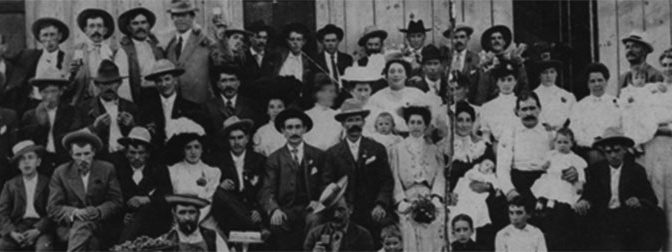
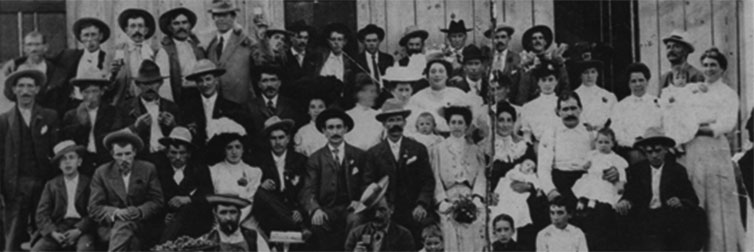
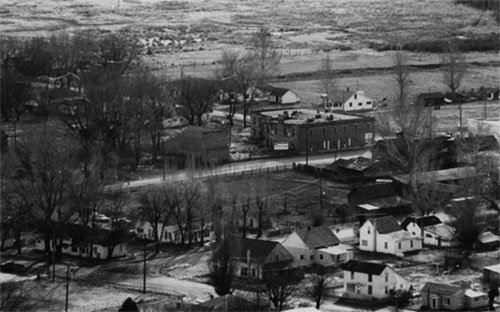
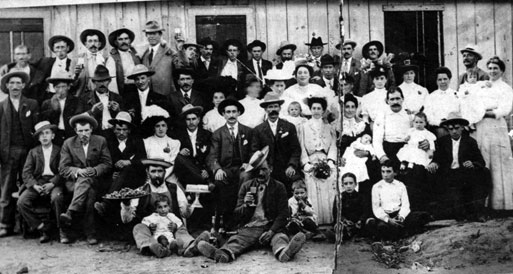
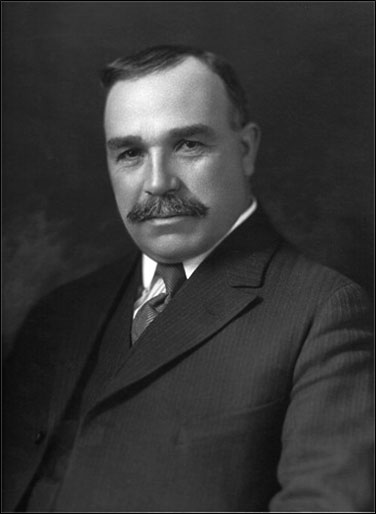
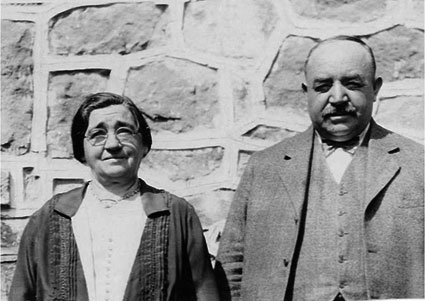
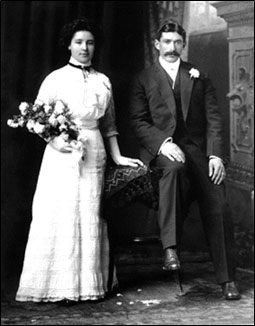
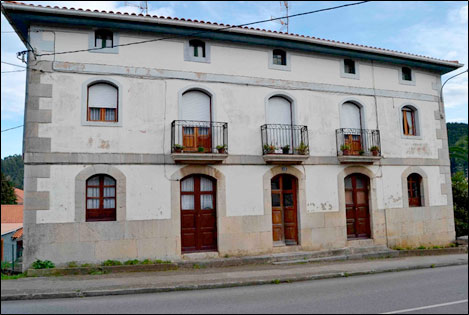

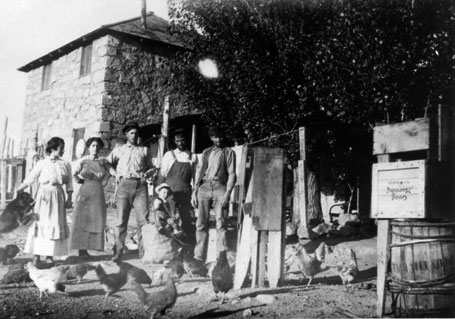
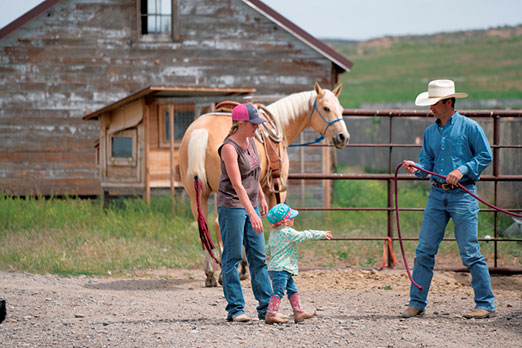
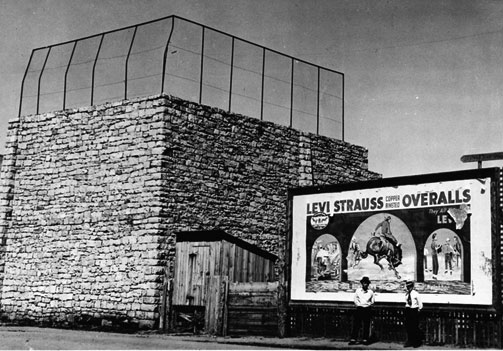
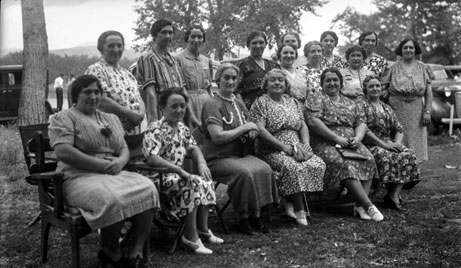
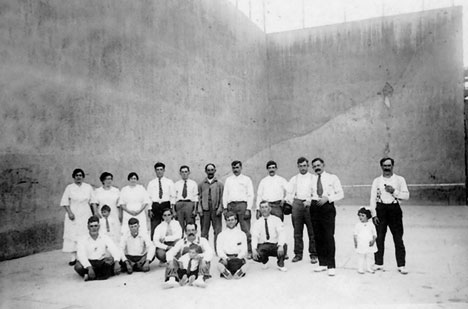
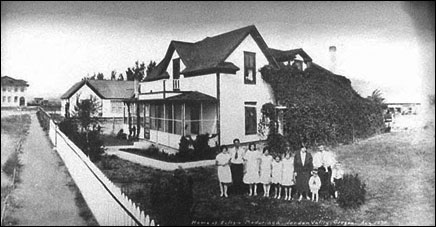

It sounds like the American Basques want to take over America and the rest of the world!
What a slap in the face to the U.S.A. to refuse to speak English, even broken English.
Sabino Arana must be overjoyed to read this post. He was a racist who softened his position when he understood that it was not such a good approach–he moved toward a “Christian democrat”. But he never changed.
And the American Basques joined the military and counterintelligence. Some most likely work with atomic weapons. The world is wilder every day.
Many Mexican immigrants refuse to speak English–reviving old wounds of the American invading Mexico and the ninos heroes. I tell my American friends, even though it has as much effect as peeing in the wind, ” if America does not find a way to control immigration, you will not have a country anymore”.
I never realized till I read this article how racist and prejudice the American Basques could be. My instinct told me that something was not kosher but I always tried to counter balance by looking for the good. Now I know, the cat is out of the bag.
There is a song by the Kingston Trio–something like ” I don’t like anybody very much and we will all blown away” till that time, have as much fun as possible.
Monique
Sorry you feel that way; early Basque folks were not treated well. My father grew up in Jordan Valley and one of the house rules they had was that the boys (3 of them) would learn and speak English outside the home; Basque was to be spoken in the home. My father added that my Aitxita said they made a choice to come to the US and the family would learn and speak English.
Monique !!! I’m sorry you think that the Basque people are racists. You have no idea what those people went through at that time. All the Basque people I know are very nice and proud of there heritage.
Well done. My wife, Rosie Arritola Madariaga Pinkela was born and raised in JV (Old Basque Inn, boarding house) 1940-2023. Frank Pinkela
Monique it’s interesting your take away from the article was that the early basque immigrants were racist. There is nothing in the article that indicates the Basque were racist.
The fact is, the Basque immigrants could write the handbook on becoming Americans, while at the same time, retaining their proud and strong basque culture to share with the communities they live in. Basque festivals today are attended by as many non Basques as there are Basques.
I do not know of a basque immigrant who did not learn English. They also were very adamant that their children be educated. They came to America to be Americans. They not only learned and spoke English, they could also speak Basque and Spanish!!
The Basque immigrants were a proud bunch but they were all very hard working and humble. That led to their success as prominent figures in the communities they settled in.
Great article. My name is John Acarregui L am grandson of John and Paula Acarregui
Jordan Valley was a great place to enjoy
Appreciate your efforts with the details
Monique you obviously do not have any idea what you are talking about.
First off-there is nothing in this article that speaks of the Basque being racist!!
Secondly, the Basque people have been very successful in becoming Americans(and they are very proud to be Americans) while at the same time keeping their own rich culture. A culture that is shared throughout the northwest and is enjoyed and revered by many non basques as well.
Third every Basques person I know who immigrated to the US learned English and they were very adamant about it. They came here to America to be Americans!!! In fact they were all tri-lingual; Basque, Spanish And English!!!